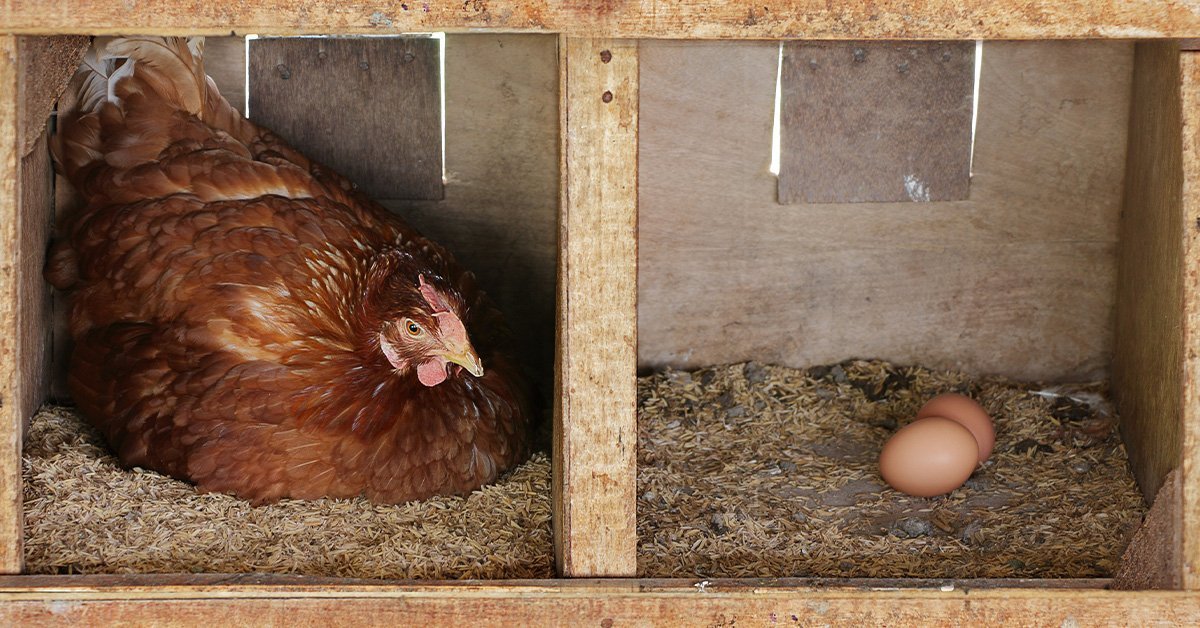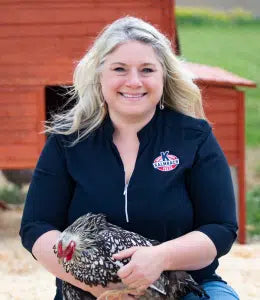How to Care for a Broody Hen

What is a Broody Hen?
If you have had chickens for a few years, then you have probably had a broody hen or two. A broody hen is a female bird that has the desire to incubate eggs. Broody hens will find a comfortable place – usually a secure and small space like a nesting box – to lay their clutch. Once a desirable number of eggs (about 6-12) are in the clutch, then the broody hen will begin incubating her eggs by sitting down and staying put!
Will All of my Hens Go Broody?
If you are new to chicken keeping, you may wonder if all of your chickens will eventually go broody. The answer to that is NO! I currently have about 25 female chickens across 12 different breeds and only ONE of my hens – a Columbian Wyandotte - has gone broody this year. In fact, she has already gone broody twice this year! She also went broody twice last year.
How do I Identify a Broody Hen?
A hen’s propensity to go broody is linked to their genetics, and some breeds are far more likely to become broody. Silkies are well known for their broody tendency. Every Columbian Wyandotte that I have had over the years has gone broody. However, none of my Silver-Laced or Golden-Laced Wyandottes have. It really varies based on genetic strain and breed. If you are interested in knowing if your hens may go broody, check out our Chicken Keeping Guide or your latest hatchery catalogue. Most of those resources will have a section that helps identify how often a particular breed may go broody. I know when my hens are starting to go broody by observing their behavior. When all of my other birds are running out of the coop in the morning and I notice a hen firmly planted in the nesting box, I make a mental note. She may just be laying an egg. However, if I notice her firmly planted in that nesting box for more than two or three days in a row, I know she is going broody. Another key observation is her behavior. Many broody hens will become quite protective of their clutch and may peck you or audibly warn you to stay away.
Pros and Cons of Broody Hens
The Pros
It’s a natural process. I always admire my broody hens’ dedication to their clutches. Those girls sit down on that clutch and STAY PUT for 21 days. Broody hens do get down for very short periods of time to eat, drink, and poop but their dedication is admirable! A broody hen is also an easy and gentle way to add new birds to your flock. Adding new birds to your flock can often be stressful as the pecking order gets re-established. A broody hen is already part of the flock. When she is ready, she will bring her babies into the rest of the flock. She will also protect them should another bird get too curious or harass the babies. I always find that everyone integrates so easily when the broody hen is in charge of group gatherings! Watching a broody hen care for her babies is really very special. I love listening to her soft little cackle as she tries to show the babies where to find food and water. Moreover, watching a little line of fluffy babies follow their momma to explore outside is very entertaining. Broody mommas will also do all of the work of keeping the babies safe and warm so you do not need to maintain a brooder box.
The Cons
When a hen goes broody, she eats and drinks very little. She uses a massive amount of her body stores in order to protect her clutch and care for her eggs. Hens can go broody even if their eggs are not fertilized. If your hen has not been with a rooster, her efforts will be in vain and this can be very stressful. If you have a broody hen sitting on unfertilized eggs, I encourage you to research gentle ways to discourage broody behavior or try the ole bait-and-switch (e.g., sneaking fertilized eggs into her clutch). If your primary goal in chicken keeping is to collect and/or sell eggs, then you want to avoid breeds that go broody. When a hen goes broody, she stops laying eggs and pours most of her resources and body stores into incubating her clutch. It may be 2-3 months before she starts laying again. Personally, I find too many roosters to be the biggest negative of broody hens. Natural breeding will usually give you about 50% male and 50% female offspring. Once those cute little babies grow, you usually end up with too many roosters in your flock.
Where Should I Let my Broody Hen Incubate Her Eggs?
Broody hens prefer a safe, quiet, and relatively small place to incubate their eggs. The nesting boxes are a favorite broody spot for my hens. I have also had hens go broody in a quiet corner of the coop or even far away from all of the other birds in the barn or under a porch. As long as the location is safe from predators, I usually let my broody hens stay where they feel comfortable. If your coop is crowded or you don’t feel that the location is safe, you can move your broody hen and clutch to a new location. However, take care to make sure your alternative location is compact (like a pet carrier or dog crate) and she doesn’t have much opportunity to get away from her clutch. Moving a clutch can be stressful and may lead to your broody hen abandoning her eggs.
What Should I Feed a Broody Hen?
We get this question a lot. Since a broody hen is no longer laying eggs, it is perfectly fine to feed her a high-quality grower or maintenance feed. Since my broody hens usually reserve a room in the Nesting Box Hotel with all of my other hens, they continue to have access to a complete layer feed. Additionally, broody hens will eat very little, only about 20% of their normal intake, while they are incubating eggs. Once the babies hatch, I do keep a feeder with a high-quality starter/grower like 18% Start Right Chick or Chickhouse Reserve™ available for the babies. The broody momma can eat that too, since she won’t be laying eggs again for another 4-6 weeks.
